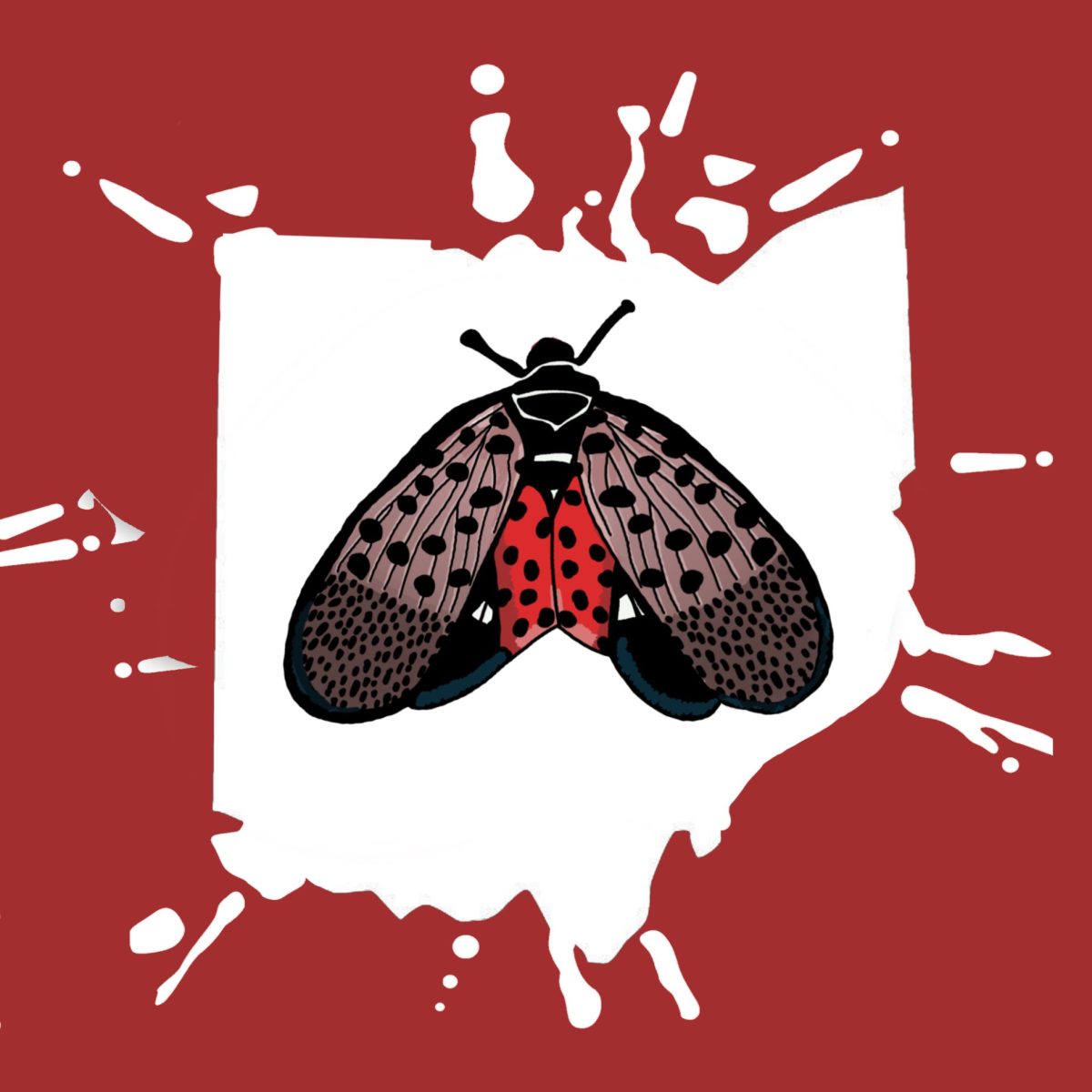Spotted lanternflies have arrived in Northeast Ohio. While their impact may be unknown to students, experts have expressed concerns regarding their effect on local agriculture and horticulture. The Ohio Department of Agriculture recently confirmed to The Observer that they have “received more than 1,500 reports of [spotted lanternflies] in Cuyahoga County since June.”
Ryan Murata, a fourth-year geology student and ambassador for the Office of Energy and Sustainability, said they have “unfortunately already found several lanternflies on campus.” He notes that “they’ve been more or less concentrated around the Veale parking garage and adjacent areas. There are unconfirmed reports that there is a Tree of Heaven, a preferred host plant for spotted lanternflies, near that area, which could explain the sightings.”
“They are too well established in North America now,” Dr. Mark Willis, associate professor of biology in the College of Arts and Sciences, said. “It’s hard for me to imagine us being able to exterminate it.”
Ella McLaren, a third-year systems biology and music student, recalls that she sees “a lot more [spotted lanternflies] in Cleveland starting [from] this fall.” She added, “I see one about once a week now. One time one flew on my leg and started crawling up. I made eye contact with it. It was cute.”
Dr. Willis, an entomologist, notes how they have already affected agricultural products in Pennsylvania, where “they seem to be particularly attracted to grapes and some orchard crops,” in addition to certain shrubs. Willis said, “[w]e all want to know what [they are attracted to in order] to protect our own landscaped plants in our yards … They can build up to high enough population levels because of course, as an introduced species, they have no natural enemies here.”
“So there is nothing to keep their population from growing, right? That is not strictly true,” Dr. Willis said. “The longer they are here, the more we are learning and discovering that there are some diseases, that there are some fungal diseases, that they are susceptible to.”
When asked about previous examples of invasive species with similar effects, Dr Willis mentioned the emerald ash borer, which was introduced to the United States in the 1990s by cargo pallets arriving from China. He notes that the borers started infesting North America’s wide variety of ash trees, which is the same material used in National League baseball bats. Dr. Willis recounts that an entomologist once told him that “people are already starting to put ash seeds into storage because one possible outcome is that the emerald ash borer will kill every ash tree in North America.”
Regarding the response by Case Western Reserve University to the spotted lanternflies, Murata said, “[t]he current plan is to collaborate with CWRU’s grounds team to produce a list of high-value and high-risk plants which oxides will be applied to, killing all insect eggs on those plants, including lanternfly eggs.” He emphasizes that “their application will again be limited to high-risk and high-value trees.”
Matura hopes for a “more targeted approach for controlling spotted lanternfly populations.” This approach “may be through the use of injectable insecticides, which essentially renders the plant itself poisonous to insects that feed on plant sap, including spotted lanternflies.”
When asked what students should do if they see a spotted lanternfly, Matura instructs them to “take a picture of it, kill it, and report the sighting to the Ohio Department of Natural Resources in order for the department to better estimate spotted lanternfly populations.”




